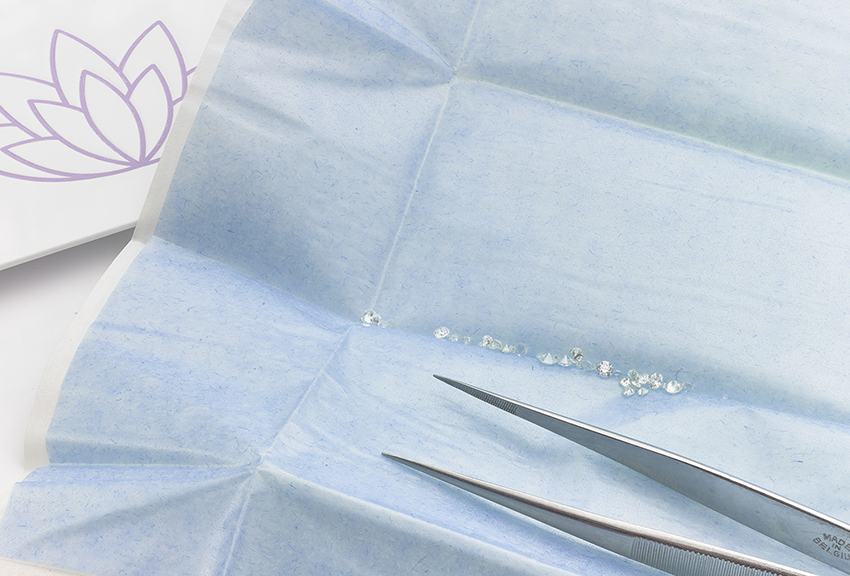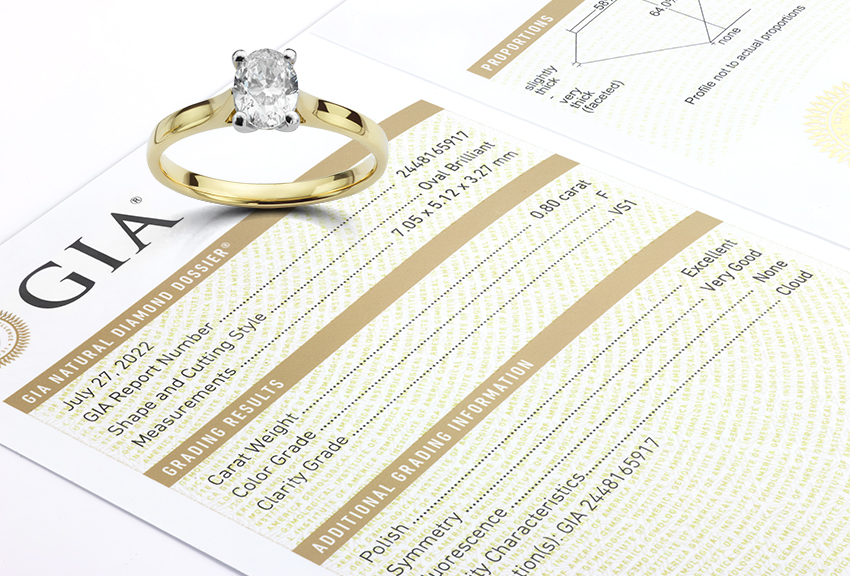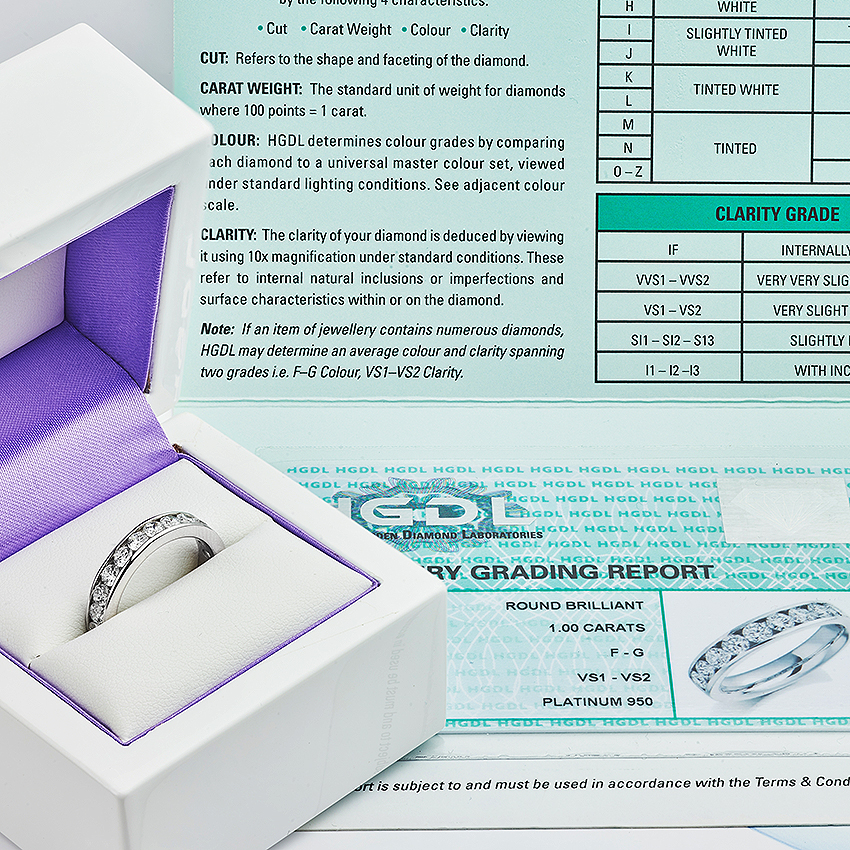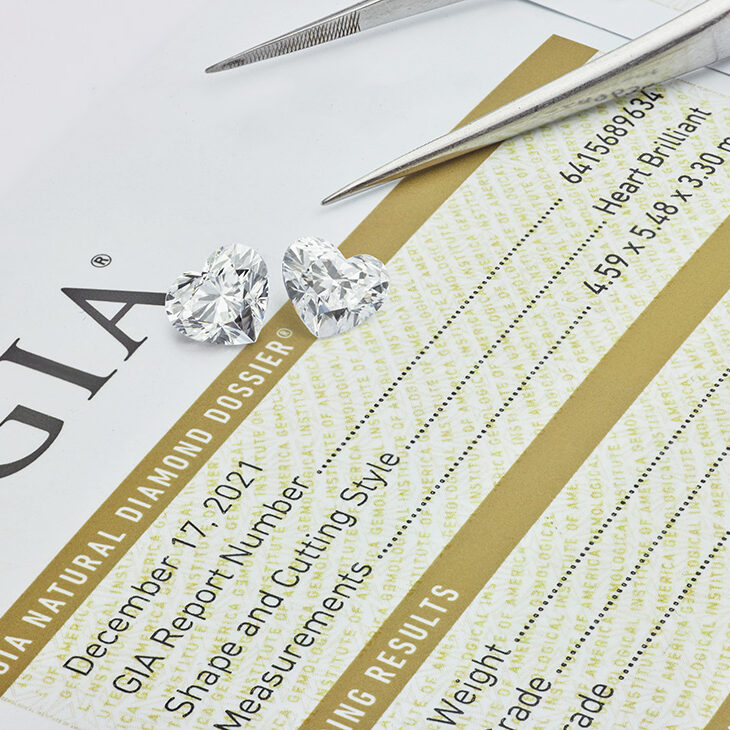The smallest certified diamond size usually falls between 0.20cts to 0.25cts, typically provided for whiter, higher clarity diamonds.
Regardless of size or carat weight, not all diamonds undergo certification. In fact, a large proportion of diamonds sell without certification.
Why are small diamonds sold without a certificate?
Diamonds below 0.20 carats rarely include certification due to cost. In smaller sizes, the cost to certify a diamond represents a much larger proportion of the overall diamond cost.
An item of jewellery set with hundreds of small diamonds would cost far more than necessary if every diamond included certification.
Many years ago, a jeweller’s word sufficed for diamond quality. Today, consumers expect precise details about their diamond’s grade. However, some jewellers still provide vague information, quoting broad ranges in colour and clarity, which savvy buyers should surpass.

The Rise of Demand for Diamond Certification
Diamond certification became essential to empower consumers with accurate information about their purchases. Without it, buyers were in the dark about the diamond’s true quality and the fairness of the price. Diamond certification provides informed shopping without falling under any legal obligation.
But, unknown to most buyers, the reputation of diamond grading laboratories poses serious questions about authenticity. To explain, some laboratories grade generously. In contrast, other laboratories grade with stricter standards. For example, GIA remains a trusted laboratory for this very reason.

Most small diamonds feature a micro-laser inscription of the certificate number on the girdle of the diamond. This process would be impractical on very small diamonds.
While certification benefits consumers by providing a framework for assessment, it has limitations. Grading standards vary, leading to inconsistencies. Consumers should not solely rely on certificates; professional advice is crucial for a wise diamond purchase.
Hidden Characteristics: Milky Appearance and Tinges
Some diamonds exhibit a milky appearance, impacting their brilliance. Surprisingly, certification rarely covers this aspect of a diamond’s appearance. Additionally, grading reports often omit colour tinges like brown or green, affecting a diamond’s visual appeal.
Blanket Diamond Certificates: What are they?
A “blanket diamond certificate” refers to a single certification document covering multiple diamonds within a piece of jewellery, such as a diamond eternity ring, line bracelet or diamond necklace.

Instead of certifying each diamond individually, which can be impractical and costly, a blanket certificate provides an overview of the entire collection. Typically, such certificates include any variation of colour and clarity across items in the jewellery. For example, D – E colour and VS2 – SI1 clarity.
This is particularly relevant for items with numerous smaller diamonds, where individual certifications might be expensive and cumbersome. While convenient for jewellery containing multiple stones, consumers should be aware that blanket certificates may lack detailed information on each diamond’s unique characteristics, emphasizing the importance of additional scrutiny for a comprehensive understanding of the item’s value.
How small are the smallest diamonds?
The smallest diamond sizes available to purchase typically measure from 1mm upwards. Our video below reveals the minuscule size of fully-faceted 1mm round brilliant cut diamonds of CanadaMark origin. It would be ridiculous to certify such tiny diamonds. Instead, our trade clients receive the CanadaMark number used to track diamonds from the mine to the final polished diamond.
About Mark Johnson
My name is Mark and I'm founder at Serendipity Diamonds. I have 30 years or experience in polished diamonds and jewellery. Today, I work with an expert team in our Isle of Wight jewellery showroom located in Ryde. Most of my work involves helping clients in our showroom, working on our two websites and photographing jewellery commissions.



